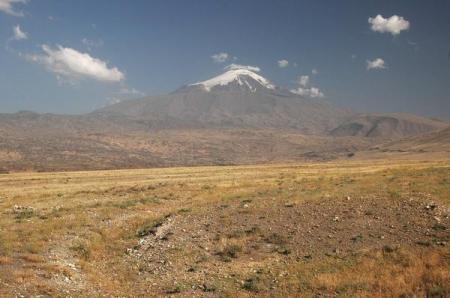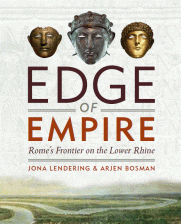It is one of the most impressive movie scenes I have ever seen: how Archimedes set Roman warships afire with a burning mirror, in the famous Italian movie Cabiria (1914; scene starts at 20’24). The incident, which took place during the siege of Syracuse in 212 BCE, can be found in many history books and continues to amaze. Unfortunately, it can not be true.

Scene from Cabiria: Archimedes' hexagonal mirror (top) sets a Roman ship (front) afire.
There are two arguments. In the first place, the laws of physics. On at least three occasions, people have tried to repeat the trick; they established that, if you use dozens of mirrors, you can indeed set fire to an object at a short distance (50-60 meter). The sources, however, refer to only one mirror or a couple of mirrors. Worse, the object must remain on the same place for some time, which is not very likely: the Roman galleys were subject to waves, winds, and swell. To really work, the mirror must have a diameter of at least eleven meters, which is larger than the largest telescope mirror ever made.
As a practical instrument, the weapon can, therefore, not exist, unless Archimedes could suspend the laws of nature. The story is pseudoscientific in its most elementary sense.
The second argument is that the famous incident is not recorded in our sources. Historians like Polybius, Livy, and Plutarch offer detailed descriptions of the siege of Syracuse and mention new weapons, but the heat ray is not among them. This is sufficient to send the story to the country of fairy tales.
But what are the origins of the story? Now, things become more complex.
The first to refer to Archimedes as firemaker appears to have been the satirical writer Lucian, who praises an engineer for having surpassed several legendary engineers, including Archimedes, who invented an instrument to set ships afire (Hippias 2). We know more about this from Lucian’s younger contemporary Galen, who offers an account of spontaneous combustion of houses, and adds that “this, they say, was how Archimedes set fire to the enemy ships by means of pyreia” (On Temperaments 3.2). Pyreia is usually translated as “firesticks”. Note that Lucian and Galen do not identify the enemy.
As far as I know, the first to refer to Archimedes using mirrors, is the Byzantine author Anthemius of Tralles (sixth century) in a book called On miraculous engines. On page 153 and 156 (ed.Westerman), he informs us that Archimedes’ secret weapon consisted of many small, flat mirrors. The Byzantine author Tzetzes (twelfth century) even offers a detailed description:
Archimedes constructed a kind of hexagonal mirror, and at an interval proportionate to the size of the mirror, he set similar small mirrors with four edges, moving by links and by a kind of hinge, and made the glass the centre of the sun’s beams … So after that, when the beams were reflected into this, a terrible kindling of flame arose upon the ships, and he reduced them to ashes a bow-shot off (Chiliades, 2.109-123).
This is the instrument shown in Cabiria, but the experiments have shown that it is too simple to do the job; Tzetzes cannot have used an authentic source.
There’s perhaps one author before Anthemius who may have referred to burning mirrors: the third-century historian Cassius Dio, but his account of the siege is lost. However, Tzetzes’ older contemporary Zonaras summarizes Dio’s History of the Roman Empire, and refers to the burning mirror. The problem is that Zonaras often introduces stories to his excerpt, and this may be one of these additions; worse, he also writes that this weapon was used in 514 by one Proclus, when he defended Constantinople against the ships of the Gothic adventurer Vitalianus (Annals 14.55).
Summa summarum: I think that Proclus’ experimental weapon, which must have been known to Anthemius, is the origin of the story. Alternatively, the story of Archimedes’ mirrors appears to have been invented in the age of Lucian, Galen, and Cassius Dio, about half a millennium after the siege of Syracuse.
This is not unique: think only of Pythagoras, who is never credited with the theorem that is now named after him, until the fourth century CE.
<Overview of Common Errors>




 Posted by Jona Lendering
Posted by Jona Lendering 

 I was discussing this project with a rabbi and his wife, when a friend of theirs arrived, Marcel Poorthuis, who told me about a book of which he was coeditor, called
I was discussing this project with a rabbi and his wife, when a friend of theirs arrived, Marcel Poorthuis, who told me about a book of which he was coeditor, called 








 The fourteenth chapter deals with Antiochus’ death and succession; the last chapter offers a general assessment of this king’s rule. In Mittag’s view, he was especially interested in stabilizing and strengthening his kingdom – or, as
The fourteenth chapter deals with Antiochus’ death and succession; the last chapter offers a general assessment of this king’s rule. In Mittag’s view, he was especially interested in stabilizing and strengthening his kingdom – or, as 


 Subscribe to feed
Subscribe to feed
You must be logged in to post a comment.